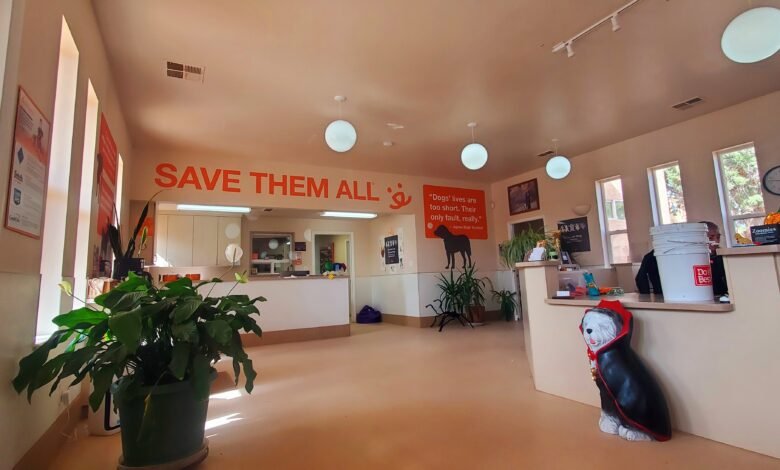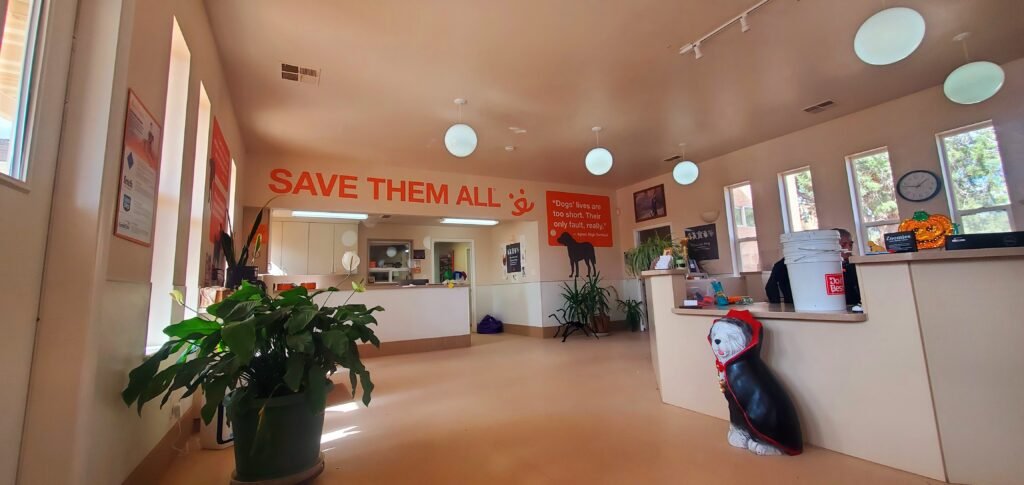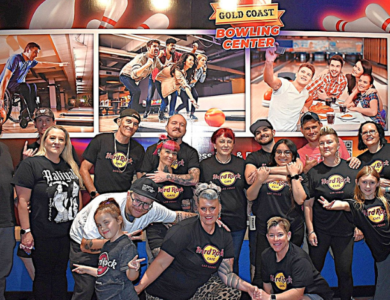We may earn a commission when you click on links across our website. This does not influence our opinions — learn more.
Inside Dogtown’s Revolutionary Approach to Shelter Reform and Adoption Practices

Nestled in the high desert of Kanab, Utah, Dogtown — part of the Best Friends Animal Sanctuary — is more than a refuge for dogs; it’s a living blueprint for a no-kill future. Walking through the sanctuary’s sprawling grounds, you’re struck by the harmony of structured care, joyful chaos, and a palpable sense of purpose. Here, dogs of every size, age, and background live not just safely, but with dignity, rehabilitation, and hope. But the work at Dogtown doesn’t stop at its fences — it ripples across the country, including states like Nevada, shaping the national conversation on shelter reform, adoption practices, and community engagement.
Sanctuary to Solutions
- • How a Desert Haven Became a Blueprint for the Future of Animal Welfare
- • Barrier-Free Adoption and the Realities That Challenge It
- • Beyond the Shelter Walls - How Communities Hold the Key to a No-Kill Future
Ramon Villatoro, Dogtown’s Director, and Michelle Sathe, Best Friends’ Public Relations and Marketing Strategist, welcomed us for a tour and conversation that revealed just how deeply their mission intertwines operational excellence with human connection. From the moment you step onto the grounds, it’s clear that Dogtown isn’t just a sanctuary — it’s a laboratory for innovation, collaboration, and systemic change.

The Dogtown Model
“What makes Dogtown unique,” Ramon explained, “is that we lead by example. We’re mission ambassadors, testing programs and policies here that we then share with shelters and rescues across the country.”
At Dogtown, that leadership manifests in multiple ways: teams manage medical and behavioral interventions for at-risk dogs, guide high-intake shelters on best practices, and even transport animals from communities where euthanasia is still a sad reality. The sanctuary balances taking in dogs with a clear focus on outcomes — rehabilitation and adoption — rather than simply housing animals.This dual focus allows Dogtown to pilot programs, such as those at Shipley’s Lodge, that can then be shared with partner shelters, helping them implement strategies proven to reduce euthanasia rates. The sanctuary functions as both a safety net for dogs and a catalyst for broader change in animal welfare.
Barrier-Free Adoption and Rethinking Assumptions
A key element of Dogtown’s philosophy is barrier-free adoption, a concept that challenges traditional adoption protocols. Rather than enforcing strict background checks, fencing requirements, or vet histories, Dogtown emphasizes conversation, trust, and connection.
Ramon explained, “Many well-intentioned barriers just increase a dog’s length of stay. People are going to get pets — if it’s not from us, it’s somewhere else. By giving adopters the benefit of the doubt, we build a relationship that helps ensure the dog’s well-being and long-term care.”
Michelle added, “We sit down with potential adopters, explore their lifestyle, and ensure it’s a good fit. We give people the benefit of the doubt but provide them with support and resources. Our pets come back to us if needed; it’s a lifetime guarantee.”
This approach, while seemingly risky, is stated to reduce shelter congestion, prevents animals from languishing unnecessarily, and fosters a sense of shared responsibility within the community.

Managed Intake and Partnering With Community
Dogtown’s philosophy extends beyond adoption. One of the most transformative strategies we observed is managed intake, which allows shelters to avoid overcrowding and maintain healthy, adoptable populations. Scheduling and pre-screening animals provides staff the space to intervene with solutions that may prevent unnecessary intake altogether — such as offering pet food, medical resources, or fostering options.
“This gives us the time to sit with the community and discuss solutions,” Ramon noted.
Sometimes people are surrendering pets because they feel they have no other choice. With a little support, we can help keep that dog in its home, which benefits everyone.
This community-centered approach doesn’t just serve dogs; it strengthens relationships, builds trust, and empowers residents to take an active role in sustaining no-kill initiatives.
Foster Programs Expanding Capacity and Care
Another cornerstone of Dogtown’s approach is fostering. From short-term outings to long-term placements, fostering allows dogs with medical, behavioral, or socialization needs to thrive outside the shelter environment.
Fosters act as a bridge: monitoring pets closely, providing critical socialization, and giving potential adopters insight into a dog’s personality in a home setting. “Foster programs give dogs a chance to be themselves, recover, and prepare for adoption,” Ramon said. Michelle highlighted the practical side: “Fosters receive supplies, medical care, and guidance. They become ambassadors for the pets in their care, helping connect them with the right families.”

Embed Projects and Peer-to-Peer Guidance
Dogtown’s influence goes far beyond Kanab. Best Friends runs embed projects, where staff temporarily join other shelters to implement best practices in intake, sanitation, and adoption programs. These can range from short-term deployments during crises, like disease outbreaks, to longer-term coaching projects aimed at transforming operational culture.
Recently, teams supported the Miami-Dade Shelter, which faced over twice its capacity in dogs. Staff assisted with vaccinations, microchipping, fostering, and adoption processes, demonstrating how shared expertise can alleviate systemic pressure. Ramon emphasized, “It’s about peer-to-peer support and ensuring shelters have the tools and strategies to succeed in no-kill initiatives.”
The Human Element – Staff, Volunteers, and Community
Running Dogtown is as much about people as it is about dogs. The sanctuary invests in the mental and emotional well-being of its staff and volunteers, recognizing the heavy emotional toll of rescue work. Inspiration comes from witnessing the dedication of young caregivers, volunteers, and community members who see themselves as part of the solution.
Michelle highlighted the connection fostered between humans and animals: “Watching someone meet their new pet — the joy, the bond, the life they bring each other — that’s what keeps us hopeful.”
Ramon added, “People are the reason I stay in this field. Seeing their passion and their impact reminds me that a no-kill future is possible.”

Hope for the Future and A No-Kill Nation
The broader vision is ambitious: Best Friends aims to make the nation no-kill. While challenges remain — overcrowding, resource limitations, and cultural differences in pet ownership — Dogtown demonstrates that systemic change is achievable through leadership, collaboration, and community support.
For Las Vegas and other high-intake regions, the takeaway is clear: adopting a no-kill philosophy requires conversations and action around what these initial elements and what they could mean for the current animal crisis; managed intake, barrier-free adoption, fostering, staff support, and strong community partnerships. Each step contributes to a network of solutions that collectively save lives.
Taking Action and How Communities Can Help
Best Friends emphasizes that solving dog overpopulation isn’t just a shelter issue — it’s a community responsibility. Everyday dog owners can help by:
- Adopting or fostering pets when possible
- Volunteering or donating to local shelters and rescues
- Sharing pets for adoption on social media
- Supporting low-cost medical and spay/neuter programs
- Engaging with shelters to help implement community-supported solutions
As Ramon concluded, “The key is connection — between shelters, the community, and the animals. When we all work together, no-kill isn’t just a vision — it’s a reality.”
Walking through Dogtown, it’s easy to see why it serves as a national model. Every program, every policy, every human-animal interaction is designed to create hope, reduce barriers, and expand capacity, all while inspiring communities to become active participants in a no-kill future. From sanctuary to solutions, Dogtown offers a blueprint not just for saving lives — but for moving forward with discussions and action to transform the culture of animal welfare nationwide.



